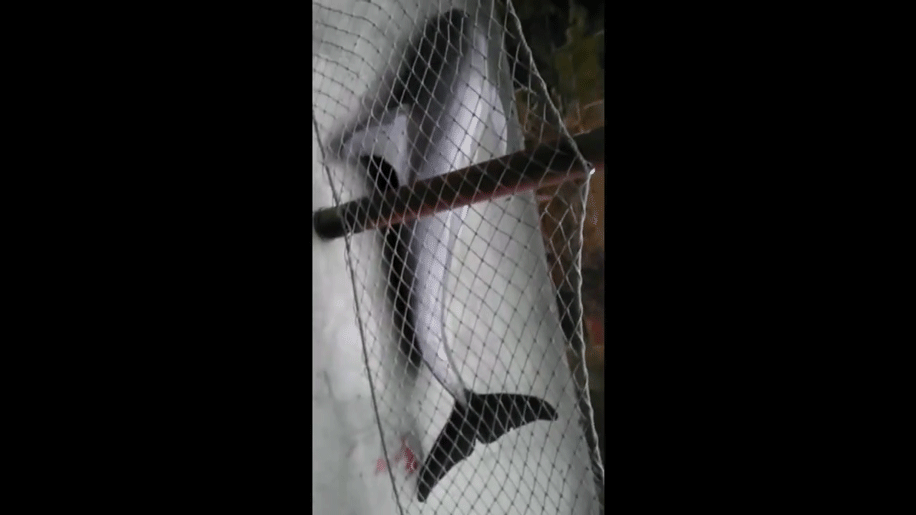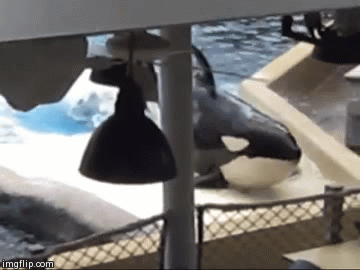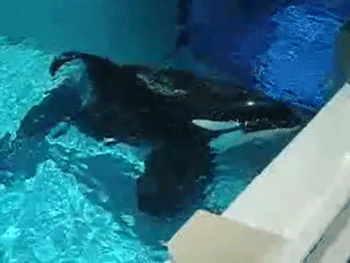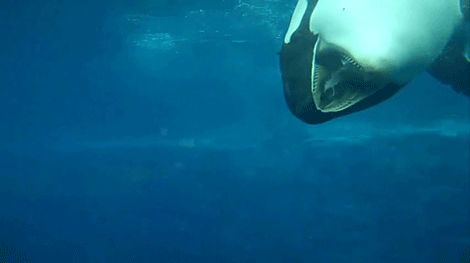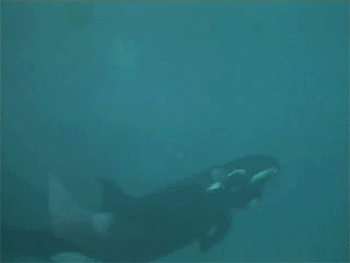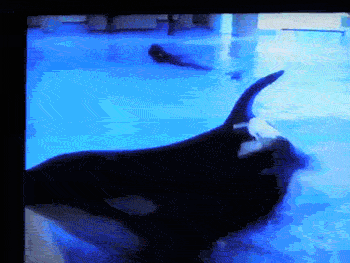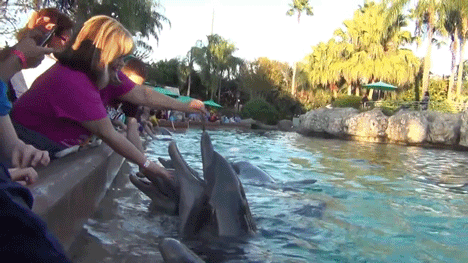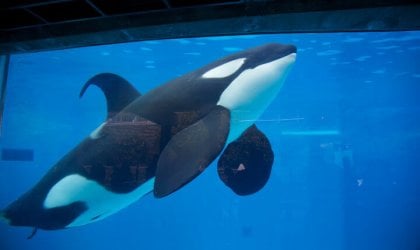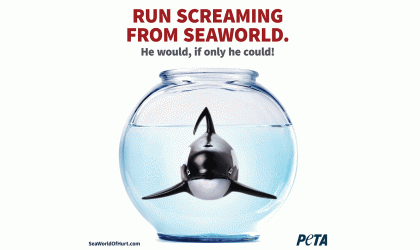Videos recorded by SeaWorld’s very own visitors reveal the haunting physical and psychological effects of captivity:
This bleeding and helpless dolphin collided with another dolphin and was thrown from her tiny tank at SeaWorld San Antonio.
This orca, hopelessly confined to only .0001% of the space that the animal would have had in nature, repeatedly banged his or her head on the concrete.
This orca floats lifelessly because of cruel confinement. In the wild, this animal would swim up to 100 miles a day and be in motion almost constantly. At SeaWorld, this orca would need to swim 1,208 laps (around the perimeter of the tank) or 3,105 lengths (back and forth at the longest part of the tank) in the park’s largest tank to equal what the animal might normally swim in a single day in the wild.
This orca was seen vomiting.
When a 12,000-pound apex predator is put into a small tank with humans, it’s not only unhealthy for the animal, it’s also dangerous for humans.
Here, trainer Ken Peters is in the jaws of Kasatka, an orca captured off the coast of Iceland in 1978.
Even the public hasn’t always been safe from curious orcas. This orca, Kayla, came up and over the wall, and visitors were close enough to touch her. What could have happened here is scary.
This dolphin was seen biting a child at SeaWorld.
These cruel conditions were caught on tape by visitors at SeaWorld. If this kind of abuse is happening in front of the public, imagine what goes on behind closed doors. Tell the world that animals are not meant to be confined at SeaWorld:

